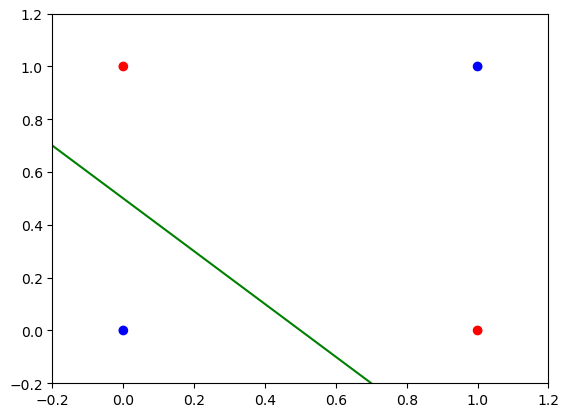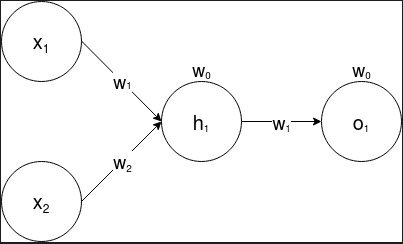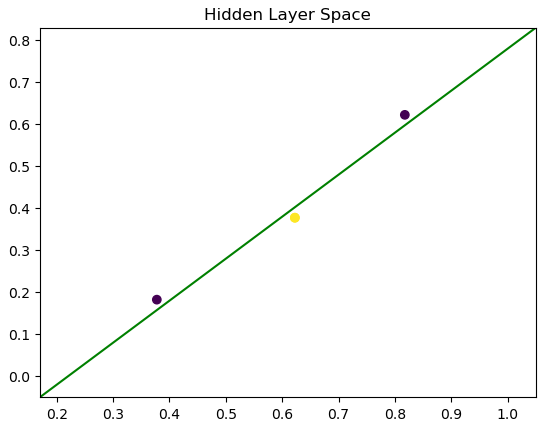Perceptron
Introduction
A popular example of a Logistic Regression model is the perceptron. Proposed by Frank Rosenblatt in 1962, the perceptron is defined as a generalized linear model:
\begin{equation*} f(\mathbf{w}^T\mathbf{\phi}(\mathbf{x})), \end{equation*}
where \(\phi\) is a basis function and \(f\) is a stepwise function with the form
\begin{equation*} f(a) = \begin{cases} 1, a \geq 0\\ -1, a < 0 \end{cases} \end{equation*}
To match this, the targets will take on a value of either 1 or -1.
The Perceptron Learning Algorithm
Based on the stepwise function, the parameters \(\mathbf{w}\) should lead to outputs above 0 for one class and outputs below 0 for the other. There is 0 error with a correct classification.
The original formulation does not work well with gradient based optimization methods due to the fact that the derivative of the stepwise function is 0 almost everyone. To get around this, the perceptron criterion is used:
\begin{equation*} E(\mathbf{w}) = -\sum_i \mathbf{w}^T\phi(\mathbf{x}_i)\hat{y}_i, \end{equation*}
where \(\hat{y}_i\) is the target class (either 1 or -1).
An incorrect classification will minimize \(\mathbf{w}^T\phi_i y_i\). We can consider this loss only for misclassified patterns.
Update Steps
- For each input, evaluate \(f(\mathbf{w}^T\phi(\mathbf{x}_i))\).
- For incorrect classifications
- Add \(\phi(\mathbf{x}_i)\) to \(\mathbf{w}\) estimate for class 1
- Subtract \(\phi(\mathbf{x}_i)\) from \(\mathbf{w}\) for class 2.
Does not necessarily get better each step, but guaranteed to converge.
Limitations of Single-Layer Perceptrons
Single layer perceptrons are limited to solving linearly separable patterns. As we have seen with a few datasets now, expecting our data to be linearly separable is wishful thinking. Minsky and Papert exposed this limitation in their book Perceptrons: an introduction to computational geometry.
Consider the example XOR problem. It is a binary classification problem consisting of 4 data points. It is not linearly separable as seen in the figure below.
This is the result of using only a single Perceptron. What if we added another perceptron? A single perceptron computes \(\mathbf{w}^T + b\). It is important to transform the first perceptron’s output using a non-linear activation function, otherwise the output would be similar to that of a logistic regression model. The updated “network” is shown below.
The result is the same! The original input in 2D is transformed to a single dimensional output. This is then used as input to the second perceptron. The result is a linear decision boundary followed by another linear decision boundary. What if we used 2 perceptrons in the first layer? The idea is that using two linear decision boundaries in a single space would allow our model to create a more complex boundary. The updated network is shown below.
This effectively solves the XOR problem! Since each node computes a linear combination of the input, we can visualize two decision boundaries with respect to the input space.
Similarly, we can visualize how the data points are transformed by visualizing the space of the output layer.




